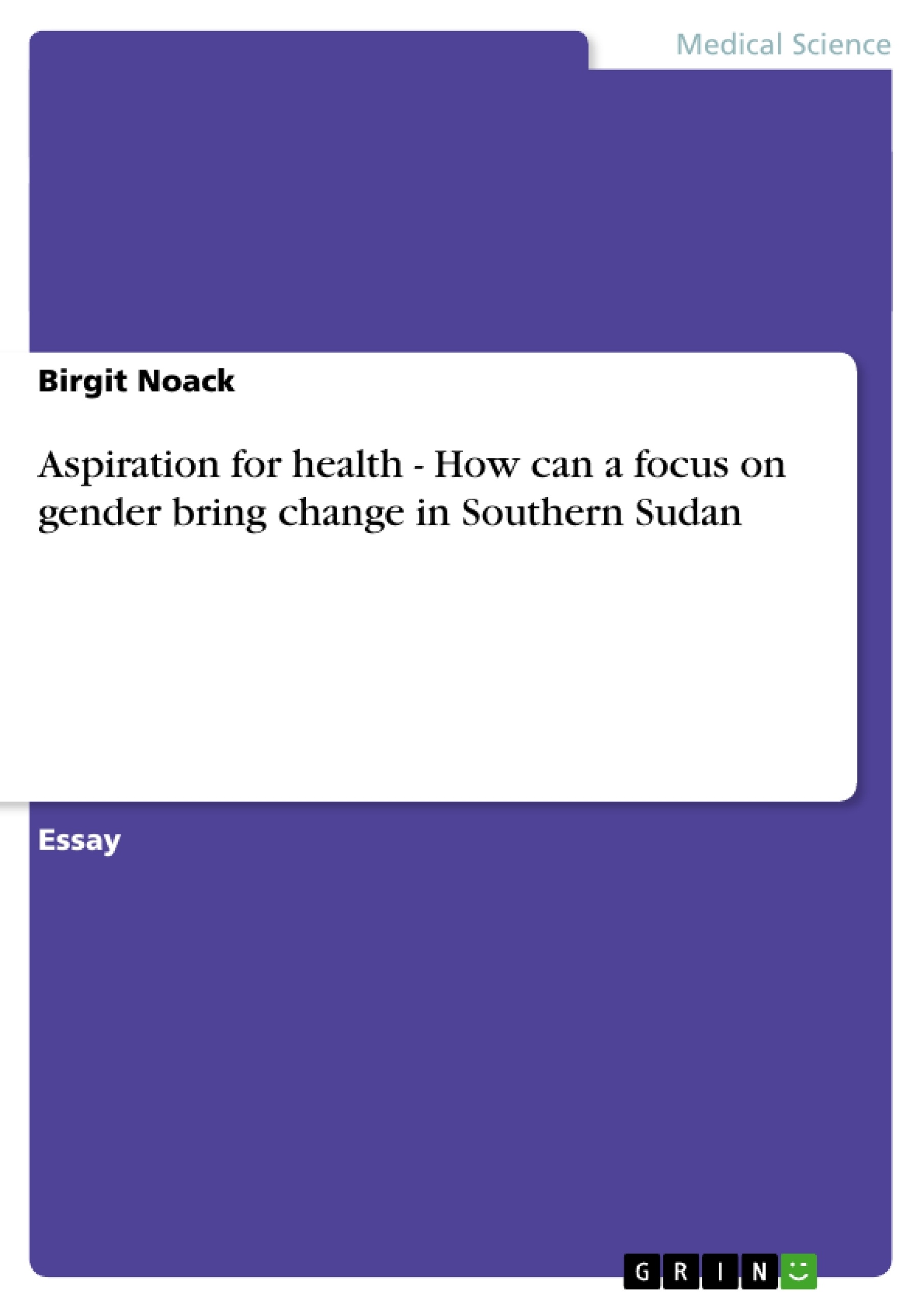[...] Concurrently, the profound gender inequity of the world’s resource distribution, a key determinant of health, contiues: “Women are half the world’s population, yet they do two-thirds of the world’s work, earn one-tenth of the world’s income, and own less than one-hundredth of the world’s property (UN, 1985:337)” This is true particularly in low- income countries, where the majority of girls and women are deprived of adequate health care, education and decision-making power, leading to illiteracy, malnutrition, abuse, chronic illness and premature death (The World Bank, 1994; UN, 2000). Current news headlines echo this problem: African women are 175 times more likely to die in childbirth and pregnancy than Westerners are (BBC news, 20 October 2003). Sudan, a country marked by extreme poverty due to chronic civil war, compounded by natural disasters, also reflects these gender inequities. The few statistics available show a lower primary education enrolment ratio for girls (41.9); a high maternal mortality ratio of 1500 (per 100 000 live births) and only 10% of parliament seats are taken up by women (UN, 2003). 6 The denial of women’s equity and health rights has profound consequences upon the health, development and survival of children. Research across the developing world indicates that, after maternal death, more than 95% of infants died within one year, with a girl child having an even less chance of survival than a boy (The World Bank 1994; Winikoff, 1988). Clearly, girls and women need to be the focus of all PHC initiatives if public health is to be enhanced. Focussing upon women in order to improve health is not a recent notion, but has been promoted since the UN sponsored Women’s Decade in 1976-85 (Moser, 1993). Thus, the question arises why only minor success appear to be noticeable, and how this conceptual framework can be applied into the context of a complex emergency like in Sudan. Therefore, this essay will firstly outline the evolution of a gender approach towards health and development, elucidating its underlying principles, objectives and achievements. It will briefly explicate the socio-economic and cultural context of a Dinka community in Southern Sudan through a ‘gender lens’ and critically reflect upon PHC programmes, with reference to the author’s personal work experience.
Inhaltsverzeichnis (Table of Contents)
- Definition of terms and abbreviations
- Introduction
- A gender approach towards health and development
- Gender empowerment reconsidered
- Gender focussed PHC in an environment of war and natural disaster
- Conclusion
Zielsetzung und Themenschwerpunkte (Objectives and Key Themes)
This work examines the impact of gender inequality on health outcomes in Southern Sudan, particularly in the context of war and natural disasters. It analyzes the challenges faced by women and girls in accessing healthcare, education, and decision-making power, and explores strategies for promoting gender equality and improving health outcomes.
- Gender inequality and health disparities
- Impact of war and natural disasters on women's health
- The role of gender empowerment in improving health outcomes
- Strategies for promoting gender-sensitive healthcare services
- Challenges and opportunities for achieving health equity in Southern Sudan
Zusammenfassung der Kapitel (Chapter Summaries)
- Definition of terms and abbreviations: This chapter provides definitions of key terms and abbreviations used throughout the text, including gender, empowerment, PHC, and various acronyms related to healthcare and development.
- Introduction: The introduction sets the context for the work by highlighting the global disparities in health and resource distribution, particularly in low-income countries. It emphasizes the pervasive gender inequities that contribute to poor health outcomes for women and girls, particularly in war-torn regions like Southern Sudan.
- A gender approach towards health and development: This chapter explores the concept of a gender approach to health and development, highlighting the importance of considering gender roles, power relations, and social norms in designing and implementing healthcare programs. It discusses how a gender-sensitive approach can help to address the unique health needs and challenges faced by women and girls.
- Gender empowerment reconsidered: This chapter examines the concept of gender empowerment, exploring its various dimensions and its relevance to improving health outcomes. It delves into the ways in which empowering women and girls can contribute to their health, wellbeing, and overall development.
- Gender focussed PHC in an environment of war and natural disaster: This chapter focuses on the specific challenges faced by women and girls in accessing healthcare in war-torn and disaster-affected regions like Southern Sudan. It analyzes the impact of conflict and natural disasters on their health, and explores strategies for providing gender-sensitive primary healthcare services in these contexts.
Schlüsselwörter (Keywords)
The main keywords and focus topics of this text include: gender, health, development, inequality, empowerment, primary healthcare, war, natural disasters, Southern Sudan, gender-sensitive interventions, health equity, and women's rights.
- Quote paper
- Birgit Noack (Author), 2003, Aspiration for health - How can a focus on gender bring change in Southern Sudan, Munich, GRIN Verlag, https://www.grin.com/document/22288



